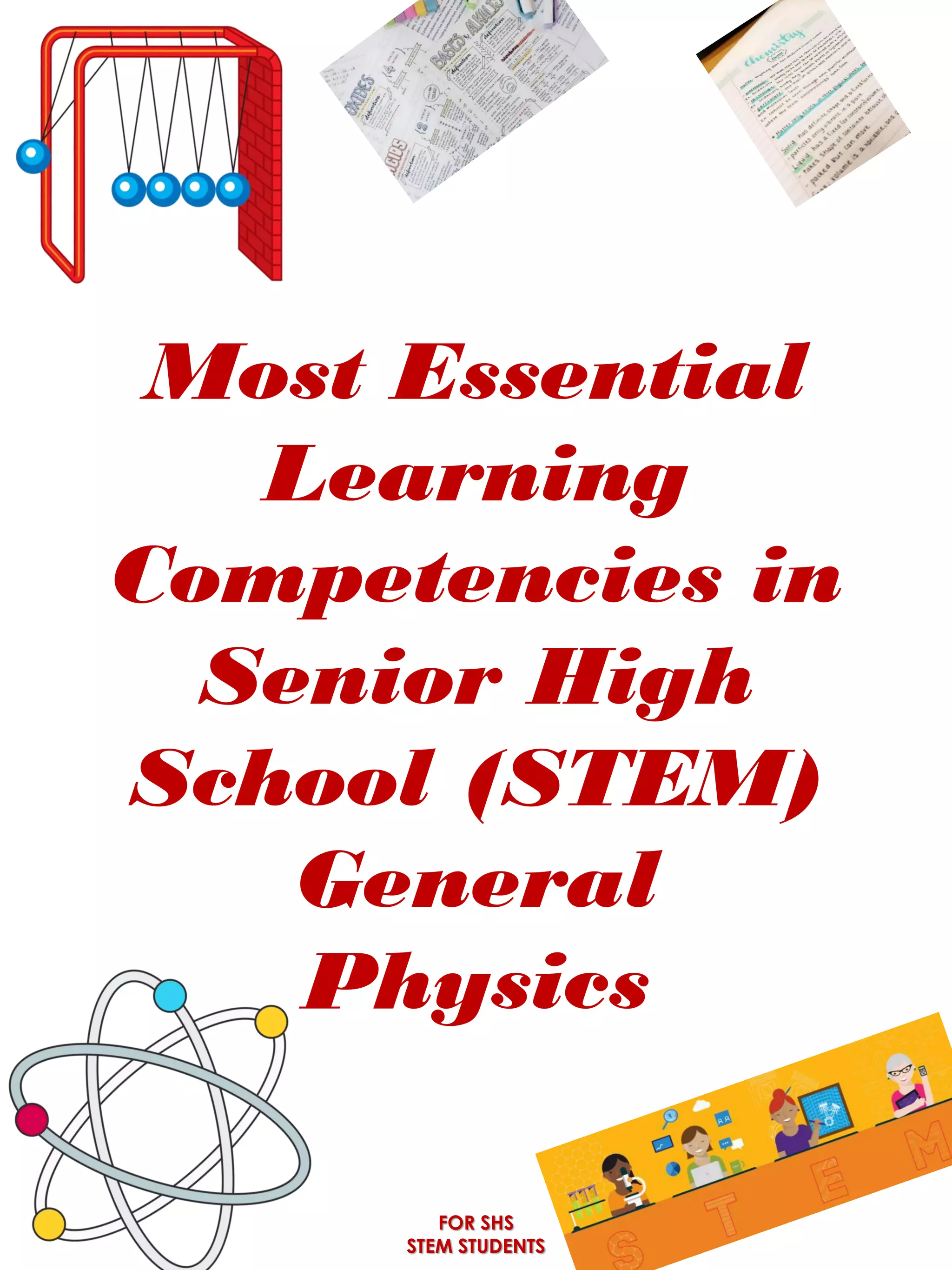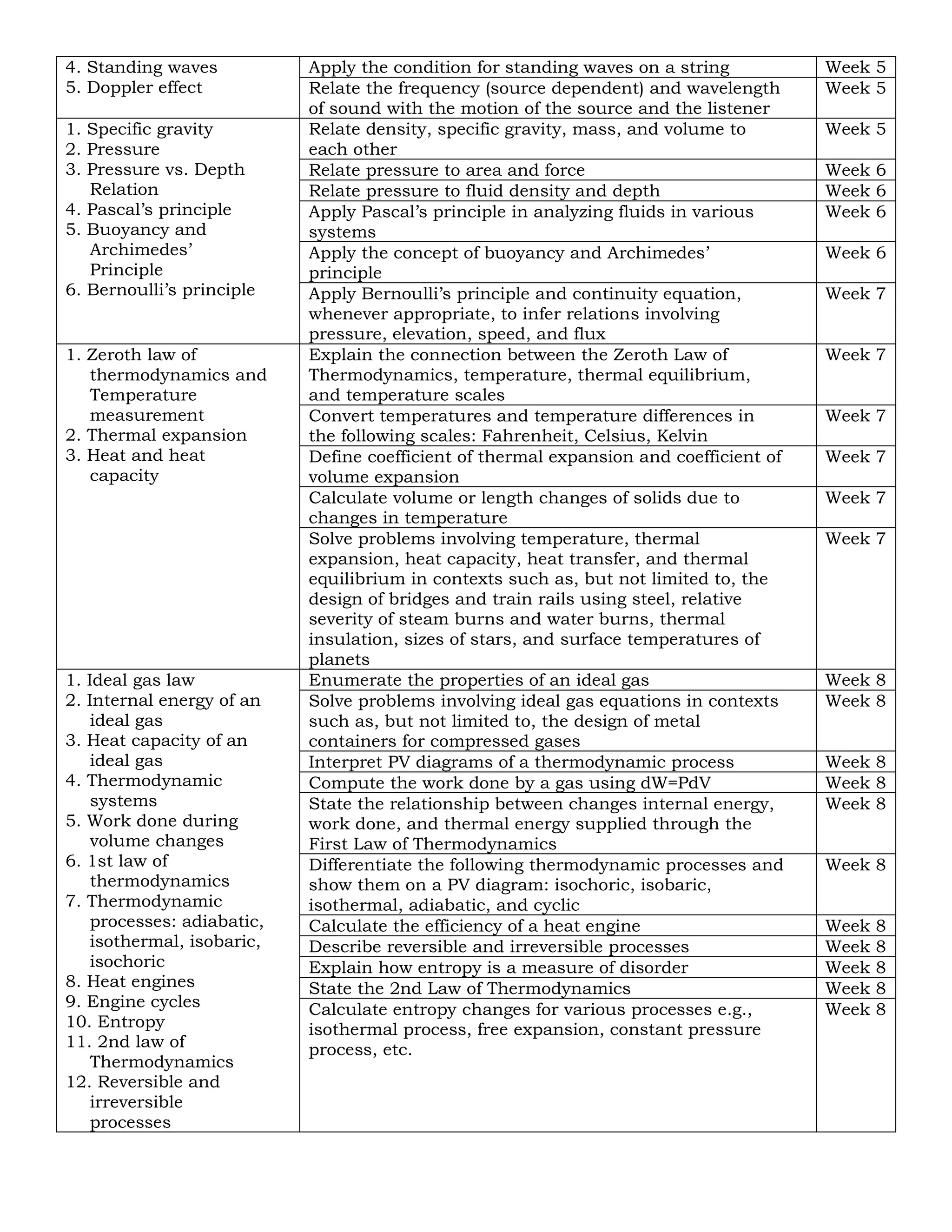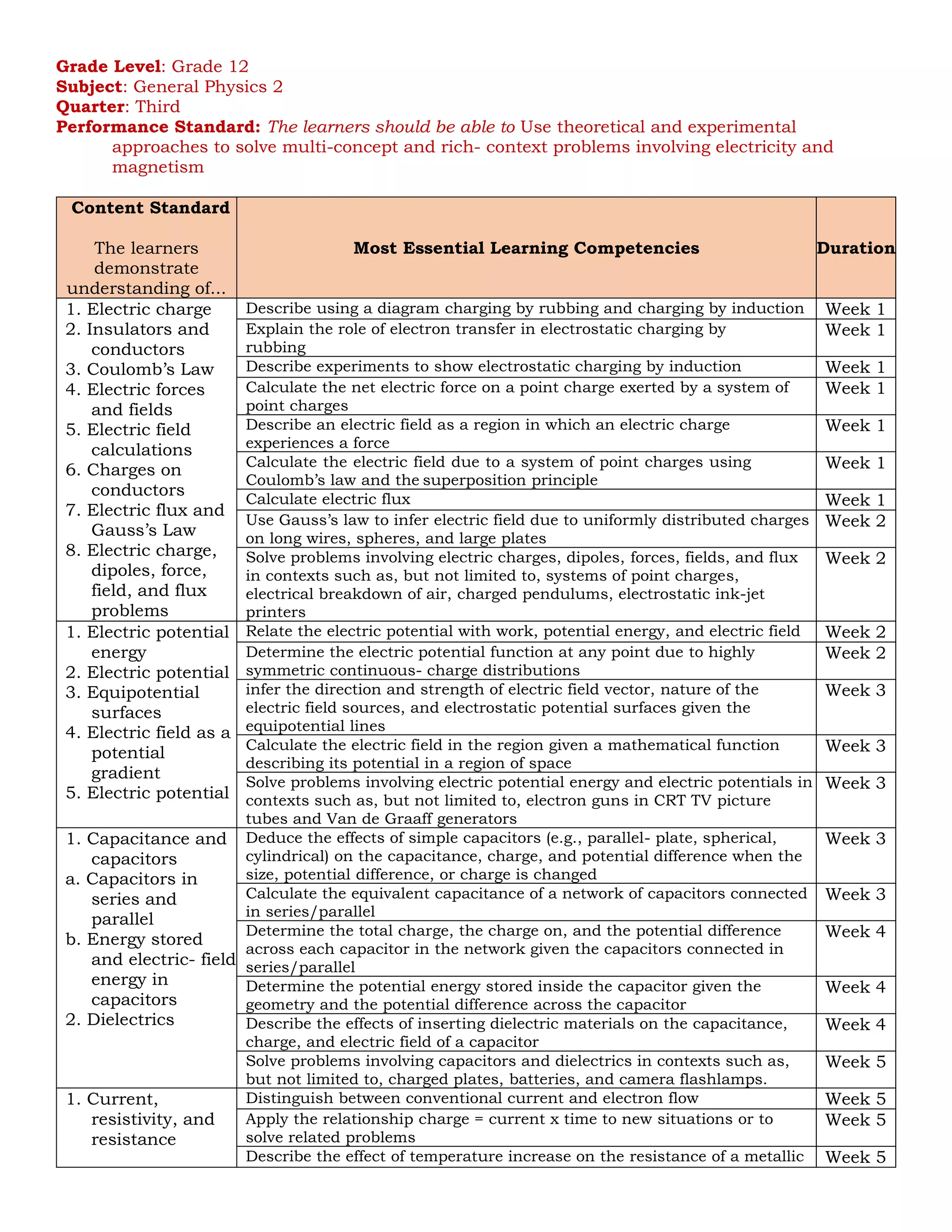The document outlines the essential learning competencies for Grade 12 students in General Physics, covering topics such as measurement, vectors, motion, Newton's laws, work, energy, momentum, and electromagnetism. It details specific objectives, activities, and contextual problems students should solve over the course of the year, segmented by weeks and performance standards. Key concepts include understanding the principles of electricity and magnetism, rotational motion, thermodynamics, and various laws governing physical phenomena.







![Grade Level: Grade 12
Subject: General Physics 2
Quarter: Fourth
Performance Standard: The learners should be able to 1. Use theoretical and, when feasible,
experimental approaches to solve multiconcept, rich-context problems using concepts from
electromagnetic waves, optics, relativity, and atomic and nuclear theory. 2. Apply ideas from
atomic and nuclear physics in contexts such as, but not limited to, radiation shielding and
inferring the composition of stars
Content Standard
The learners demonstrate
understanding of...
Most Essential Learning Competencies Duration
1. Magnetic
induction
2. Faraday’s Law
3. Alternating
current, LC
circuits, and
other
applications of
magnetic
induction
Identify the factors that affect the magnitude of the
induced emf and the magnitude and direction of the
induced current (Faraday’s Law)
Week 7
Compare and contrast electrostatic electric field and non-
electrostatic/induced electric field
Week 7
Calculate the induced emf in a closed loop due to a time-
varying magnetic flux using Faraday’s Law
Week 7
Describe the direction of the induced electric field,
magnetic field, and current on a
conducting/nonconducting loop using Lenz’s Law
Week 8
Compare and contrast alternating current (AC) and direct
current (DC)
Week 8
Characterize the properties (stored energy and time-
dependence of charges, currents, and voltages) of an LC circuit
Week 8
1. Maxwell’s synthesis of
electricity,
magnetism, and
optics
2. EM waves and light
3. Law of Reflection
4. Law of Refraction
(Snell’s Law)
5. Polarization (Malus’s
Law)
7. Applications of
reflection, refraction,
dispersion, and
polarization
Relate the properties of EM wave (wavelength, frequency,
speed) and the properties of vacuum and optical medium
(permittivity, permeability, and index of refraction)
Week 8
Explain the conditions for total internal reflection Week 8
Explain the phenomenon of dispersion by relating to Snell’s
Law
Week 8
Calculate the intensity of the transmitted light after passing
through a series of polarizers applying Malus’s Law
Week 8
Solve problems involving reflection, refraction, dispersion, and
polarization in contexts such as, but not limited to, (polarizing)
sunglasses, atmospheric haloes, and rainbows
Week 8
1. Reflection and
refraction at plane
and spherical
surfaces
2. Mirrors
3. Thin lens
4. Geometric optics
Explain image formation as an application of reflection,
refraction, and paraxial approximation
Week 8
Relate properties of mirrors and lenses (radii of curvature,
focal length, index of refraction [for lenses]) to image and
object distance and sizes
Week 8
Determine graphically and mathematically the type
(virtual/real), magnification, location, and orientation of image
of a point and extended object produced by a plane or
spherical mirror
Week 8
Determine graphically and mathematically the type
(virtual/real), magnification, location/ apparent depth, and
orientation of image of a point and extended object
produced by a lens or series of lenses
Week 8
Apply the principles of geometric optics to discuss image Week 8](https://image.slidesharecdn.com/melcshsgeneralphysicsslideshare-200531173230/75/Most-Essential-Learning-Competencies-MELC-in-Senior-High-School-STEM-General-Physics-8-2048.jpg)
